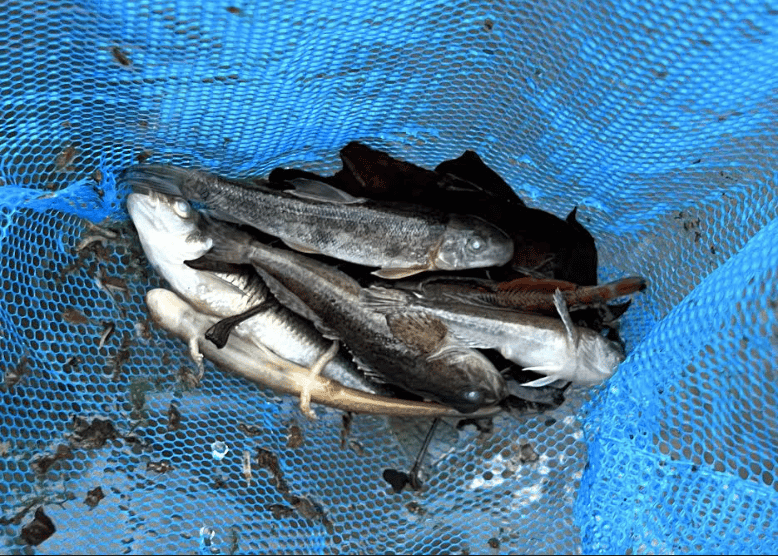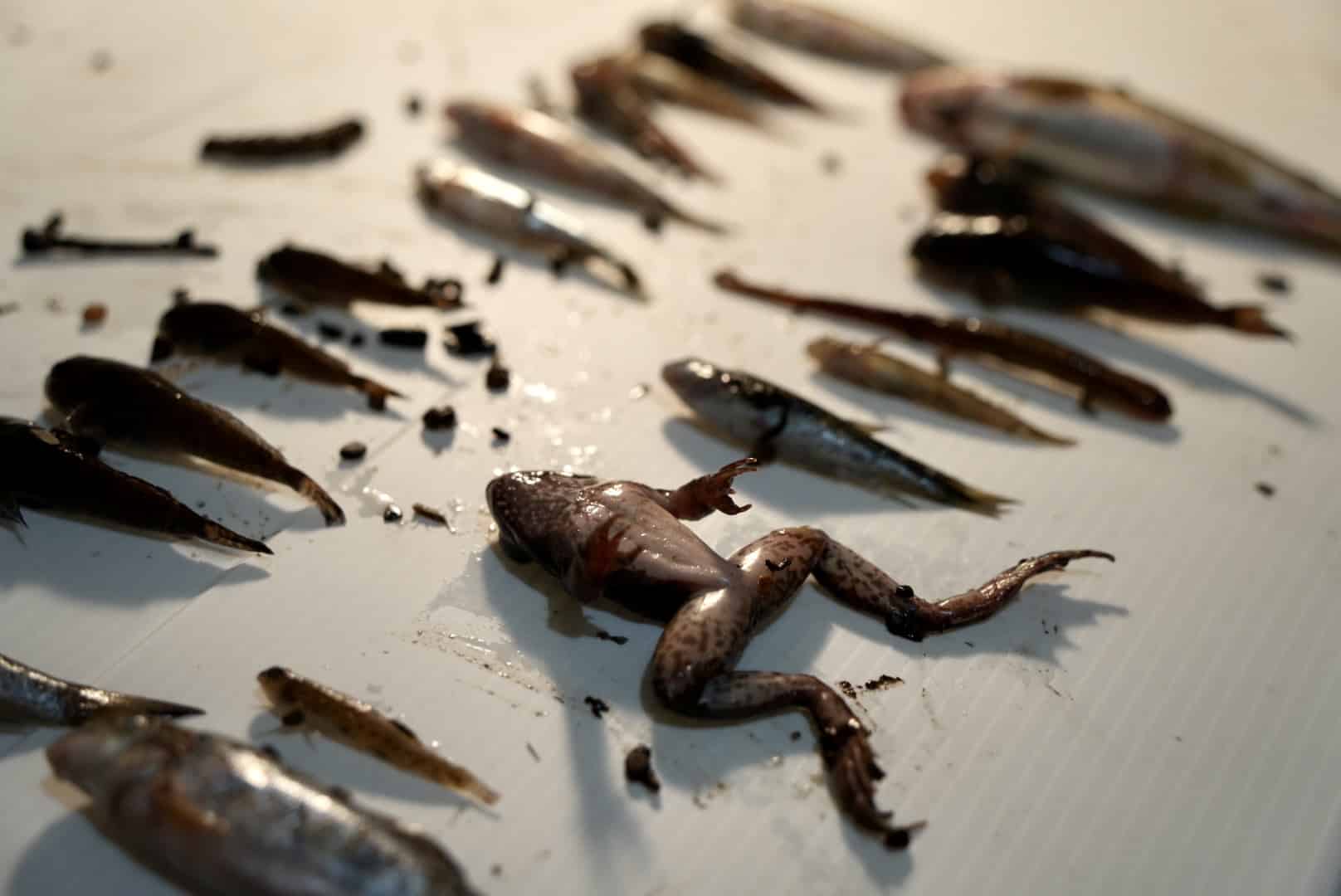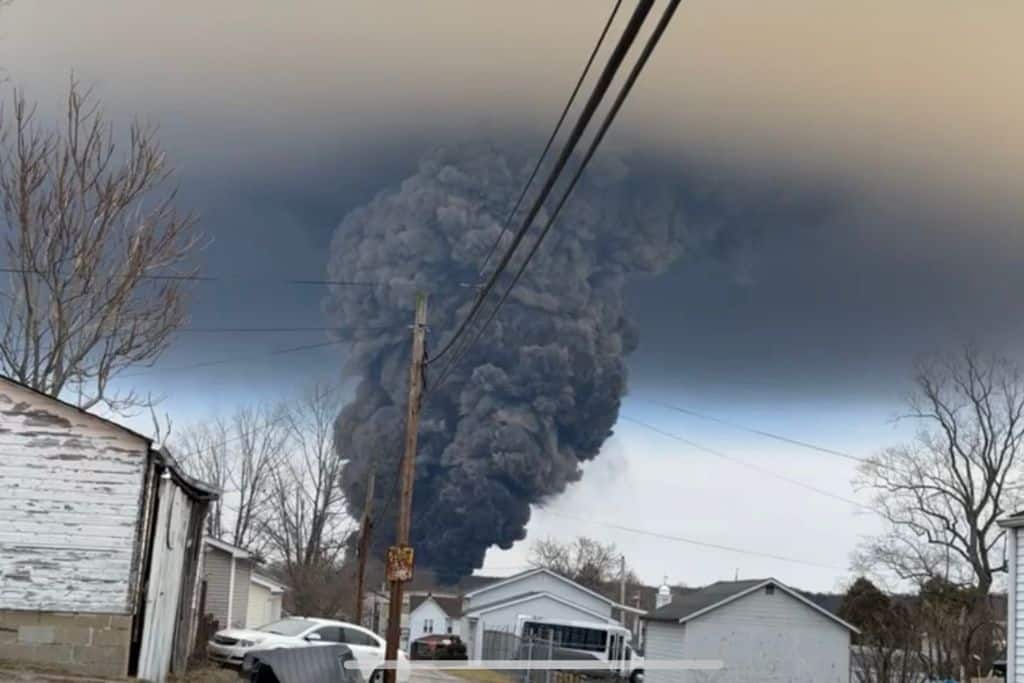Residents along the Ohio-Pennsylvania border are still grappling with fear and frustration in the wake of a fiery train derailment in East Palestine, Ohio. The train, operated by Norfolk Southern, derailed on February 3, 2023, and spewed large quantities of toxic chemicals into the town and surrounding environment. While no injuries were reported from the 38-car pile-up, the derailment filled residents’ homes with foul-smelling fumes and exposed many to carcinogenic compounds. Local waterways have suffered enormous losses of aquatic life, and some living in the area have reported symptoms of chemical exposure. As details of the Ohio train derailment continue to surface, many worry about the long-term effects this event will have on human and environmental health.
—
The Ohio Train Derailment: An Environmental Disaster
The initial train derailment and subsequent release of vinyl chloride from unstable railcars dealt a massive blow to local wildlife. Sulfur Run and Leslie Run, two streams that flow through East Palestine and eventually connect to the Ohio River, suffered the worst of these impacts. As contaminated water made its way downstream from the derailment site, it wiped out thousands of fish, amphibians, mollusks, and aquatic insects. After two weeks these streams are still littered with dead fish, and a sickly-sweet chemical odour still lingers over the water.
In an exclusive interview with Earth.org, Taylor (who asked to not use her last name), an ecologist and local resident, recalled the devastation she observed in Leslie Run a few days after the derailment.
“This was like nothing I’ve seen before,” she said. “To stand in a stream like this, completely surrounded by animals that were dead or dying, was one of the most heartbreaking things I have ever experienced.”
The Ohio Department of Natural Resources estimates that at least 3,500 fish were killed, though some argue that this estimate is low. To better understand how the derailment has impacted wildlife, some ecologically minded volunteers are working to identify dead aquatic species in local waterways. In addition to aquatic wildlife, others in East Palestine have reported cases of dying pets following the chemical release.

Thousands of fish, amphibians, and other aquatic animals were poisoned after the derailment dumped toxic chemicals into local waterways. Photo by Logan Rance.
In addition to the derailment’s immediate impacts, there is emerging concern that harmful compounds could remain in the environment for long periods of time. Photos and videos collected by community members appear to show brightly coloured chemicals being released into the water when the stream bed is disturbed, indicating that some of the spilled material has settled into the sediment. This poses a huge risk to benthic organisms and may predict the accumulation of toxic compounds in the food web.

An oil slick bubbles to the surface of Leslie Run after a rock is thrown into the water. Photo by Logan Rance.
In the Ohio Environmental Protection Agency’s (EPA) preliminary assessment of surface water in East Palestine, concentrations of petroleum products were so high they exceeded the capacity of the testing equipment. The same report also found elevated levels of tetraphene and chrysene, two carcinogenic compounds known to persist in soil and water. While officials have assured residents that their well water is unaffected by impacted surface water, some are concerned that chemicals will make their way through the soil matrix and into the water table that sits 35 feet (10.6 metres) below ground.
“Water isn’t static,” says Taylor. “It moves through the landscape, and it carries things through the soil. Our concerns about these toxins making their way into the groundwater are very valid.”
You might also like: The Worst States for Climate Change in the US
Residents Raise Health Concerns Despite Reassurance
On February 6, a black cloud of hydrogen gas, phosgene, and other toxic combustion products towered over East Palestine as Norfolk Southern burned off vinyl chloride from five unstable railcars. While early conversations about the train derailment often focused on this highly carcinogenic material, this was just one of many hazardous compounds listed on the train’s manifest. The manifest also included ethylene glycol, petroleum products, butyl acrylate, and isobutylene – all associated with neurological symptoms and irritation. “While the dystopian plume has dissipated, Ohio and Pennsylvania residents are still reporting symptoms of chemical exposure for miles outside of East Palestine.
Leetonia resident Sierra Lynn shared with Earth.Org how the event has impacted her breathing over 10 miles (16 kilometres) away: “I have asthma, and when I went outside the night of the release, I felt it immediately. You could smell chlorine in the air. I was instantly coughing.”
Later in the week, she reported having to use her inhaler over twenty times in one day. Some residents have shared pictures of their children covered in rashes, and others have reported migraines, sore throats, burning eyes, and dizziness.
According to the EPA, air monitoring has not revealed alarming levels of pollution, and drinking water near the impacted areas has been deemed safe for consumption. However, many residents are not taking chances. Early on Sunday, February 19, northern Kentucky and the city of Cincinnati temporarily closed drinking water intakes from the Ohio River, which has showed elevated levels of hazardous chemicals in the last week. With most of East Palestine’s nearly 5,000 residents living on well water sourced a mile from the derailment, bottled water donation centres are now a common sight in the area.
While uncertainties remain, some feel that their health concerns may finally be addressed. On the morning of Tuesday, Feb 21st, the Ohio Department of Health opened a community clinic to treat those experiencing symptoms of chemical exposure. Some are even hopeful that Norfolk Southern will be held accountable for its actions. Later that afternoon, the EPA ordered the multibillion dollar corporation to clean up and remediate all impacted areas, as well as to offer more support to those impacted by the derailment.

On February 21, the Ohio Department of Health opened a community clinic to assist residents impacted by the derailment. Photo by Logan Rance.
Profit Over People
One of the greatest sources of frustration for concerned residents is the lack of transparency from Norfolk Southern. Representatives declined to attend East Palestine’s most recent public information session, citing concerns for their employee’s safety. Their assistance to those impacted by the Ohio train derailment was initially limited to families living in the one-mile evacuation zone, sparking anger among impacted families living beyond this seemingly arbitrary boundary.
Many watching this event unfold are also unsettled by reports of intimidation to suppress media coverage. During her interview, Taylor revealed that she was threatened with arrest by Norfolk Southern contractors while photographing dead fish in Leslie Run.
“These contractors caught me walking along the road and saw my camera. They thought I was a journalist. They said if I was media, I would be arrested by the national guard stationed up the road,” she shared. “I had to convince them I wasn’t a journalist.”
One reporter, a Black man, was arrested at a press conference after being told he was covering the event too loudly. The charges filed against him have since been dropped. Other anecdotes of photographers being followed by unmarked vehicles have made their way through the community, leaving some to wonder if Norfolk Southern is actively working to discourage coverage. “It feels like there are things going on here that they just don’t want the world to see,” said Taylor.

The full scope of the derailment’s impacts to humans and wildlife may not be known for years to come. Photo by Logan Rance.
As cleanup efforts are underway, people in East Palestine and neighbouring towns are trying to regain some sense of normalcy. Norfolk Southern trains have resumed their usual routes, and the chemical odour that permeated the town has mostly faded. Multiple class action lawsuits have been launched against the corporation, and the derailment has drawn increased attention to the industry’s dangerous practice of precision railroading – a strategy to maximise profit by running longer, heavier trains as frequently as possible. While this event could catalyse positive change in the railroading industry, an enormous amount of damage has been done to people and the environment – the extent of which may not be understood for years.
“I don’t think we’ll understand the full scope of what’s happened here for a long time,” said Taylor. “I worry some of these chemicals are here to stay.”
Featured image by Jordan Miller News.
You might also like: How Do Oil Spills Affect the Environment


















